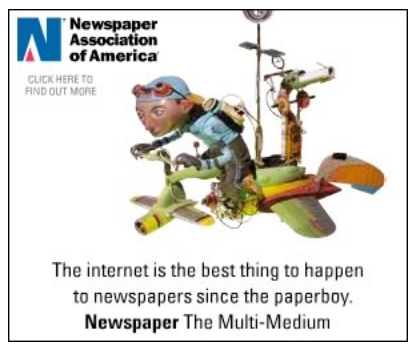Nine summers ago, I left a job running a 75-person newsroom to become the sixth employee at an Internet startup. That was the thing to do in the late 90s, when stock options were plentiful and the Internet promised boundless reward. By 2002, that had all changed, and many dot-com entrepreneurs were slinking back to their old employers, asking if they could have their jobs back.
That didn’t happen to me, though. The media startup I joined, TechTarget, actually grew through the technology nuclear winter. It went public last year (although the stock has recently been sucked down by the media stock malaise) and now employs about 600 people.
One thing we did early on that challenged conventional wisdom was to tear down walls between advertising and editorial. At previous employers, it was accepted that sales people and editors not only never talked, they were often openly hostile toward each other. My new organization didn’t have cultural barriers like that, so we experimented with a more collegial process.
Ad sales and editorial people sat together in biweekly meetings to discuss story budgets and the sales climate. Things got pretty testy sometimes, but the debate was open and honest. Instead of calling people names behind their backs, each side shared stories about its successes and challenges. Over time, the relationships grew to be, if not chummy, at least respectful.
Once people respected each other, they began to work collaboratively. Management urged along the process by putting in place a bonus plan that rewarded everyone for a business unit’s financial success. Sales reps and editors openly batted around ideas for products that would have both advertiser and reader appeal. They came up with a lot of innovations. It turned out that collaborating didn’t mean infringing. Boundaries were still respected, but conversation wasn’t prohibited. Imagine that.
It was my job as chief editor to insure that the quality and integrity of the editorial product weren’t compromised. In five years in that role, I never once felt that my principles were violated. If ever there was a challenge, I appealed to the CEO, who always came down on the side of editorial quality.
Incidentally, a handful of people switched groups over these five years, including a few editors who realized their true calling was in sales.
This experience came to mind today reading Chris O’Brien’s Five Steps to Foster Innovation in the Newsroom. Among them: “Find new ways to get people from different areas to work together. This includes editorial and business side (Sorry, but it’s long past time to kill this sacred cow).”
Amen to that. Stick a fork in that well-done bovine. Building moats between the revenue side and the product side was excusable when profits were healthy, but now is the time to discard assumptions. Ad sales people aren’t contagious and talking with them won’t make you compromise your principles. If it does, then you have bigger problems.
Traditionalists are still resistant. Over at the San Francisco Chronicle, whose future is probably less secure than any major metro daily’s, “real journalists” are appalled about the decision to give former mayor Willie Brown a column because of Brown’s history of alleged self-dealing. People who aren’t disgusted by Brown’s column “are people who don’t put journalism first,” says one insider.
Puh-leeze. Giving a popular ex-mayor a column sounds like a pretty interesting way to spur circulation. And if the purists have a problem with that, have it out in public. Let the Chron columnists and bloggers debate the issue in front of everyone instead of grousing in the men’s room. Too many editors continue to use the shield of journalistic integrity to duck new ideas and then complain to each other instead of airing their opinions in public.
Newspapers need strong chief editors who support collaboration. They also need publishers who will rally to the side of quality journalism when a dispute occurs. Reporters and editors need to get over the old biases that never made much sense to begin with. I can’t think of another industry in which the people who sell the product are at such odds with the people who make the product. If you can make a persuasive case for maintaining this rigid separation, please contribute to the comments section. I just don’t see it.
The Futility of Corporate Secrecy
There’s an interesting discussion going on over at the Gannett Blog. On Wednesday, Editor Jim Hopkins picked up on an item in one of the Gannett titles that said corporate finance and accounting operations were being consolidated and moved to Indianapolis. He suggested that recent cutbacks at other Gannett holdings point to layoffs of as many as 2,300 people, or about 5% of Gannett’s workforce.
Blogs are a petrie dish for speculation, so when Hopkins asked reader for input, they responded. Gannett folk from Asheville, Detroit, Louisville and elsewhere are jumping in with their local version of layoff rumors. It sounds like something’s coming, and it isn’t good. Absent from the discussion is Gannett, which certainly should be aware of this popular site. If the rumors are false, why isn’t someone from corporate stepping in and correcting them? Perhaps it’s because the rumors are true. Absent Gannett’s voice, people will tend to believe that silence is confirmation.
Go East, Young Journo
Media markets in India are booming, thanks to the surging economy and the growing middle class, and some discouraged US journalists are picking up and moving east. New dailies and magazines are popping up every week and they’re hiring. Some TV stations are paying ex-print reporters up to $180,000 to go on-air, and that kind of money goes a long way in India. Five recent graduates of the Columbia University Graduate School of Journalism recently joined the Hindustan Times and say the experience has been great and the opportunity is greater. One expat says he turns down two or three assignments a month. “I’d like to see more freelancers move to India. There are too many stories to cover and just not enough time to get to them all.’
Miscellany
San Diegans may have reason for cautious optimism. The owner of a local TV station says he may make a bid for the distressed Union-Tribune. Michael D. McKinnon was a print publisher back in the 50s and 60s and he doesn’t want to see a local institution in the hands of an outsider.
Just because it’s user-generated, doesn’t mean it’s profitable. In May, we told you about Everywhere and JPG, two new magazines from 8020 Media that break the mold by deriving most of their content from readers. Well, it turns out that Everywhere wasn’t everywhere with advertisers, so 8020 has shuttered it after only four issues in order to focus on JPG. Management prefers to use the term “on hold” and said it’s still committed to the model. Interesting side note: only two editors lost their jobs.
While owner Blethen Maine Newspapers continues to seek a buyer, the Portland Press Herald/Maine Sunday Telegram bleeds. An unspecified number of people have been laid off in the fourth round of cuts in a year. The publisher is also adjusting trim size and consolidating some sections to save money on paper. Employee solidarity helped mitigate the pain; workers volunteered to take time off so that jobs wouldn’t be eliminated.
Management at the Los Angeles Daily News apparently thought that one way to boost sagging morale would be to implement a dress code. Employees didn’t agree. The idea has been scotched.
The McPherson (Kan.) Sentinel becomes the latest daily to eliminate its Monday edition. It will publish five days a week. Mondays are notoriously poor for ad sales.
James Cogan says it’s a great time to get into the newspaper business because chaos is a good time for innovation. We wish there were more people with his positive attitude.
Charles Apple has a practical, whimsical and uplifting essay on advice for the recently laid-off. Our favorite: “Your editor didn’t want to lay you off. Seriously. Make him/her a reference. Even if you have to apologize for throwing that potted plant during your HR interview.”



 If the industry’s troubles have got you in a bad mood and you want to blog off some steam, change the routine a bit. Find an insult that’s more offensive that the usual F-bomb and use language that won’t make a bad impression on the 4-year-old is in the back seat. Brush up on your scurrilous vernacular with the
If the industry’s troubles have got you in a bad mood and you want to blog off some steam, change the routine a bit. Find an insult that’s more offensive that the usual F-bomb and use language that won’t make a bad impression on the 4-year-old is in the back seat. Brush up on your scurrilous vernacular with the  Tribune Co. CEO Sam Zell must be relieved to be back on familiar territory in the real estate business. He’s just put the neo-Gothic
Tribune Co. CEO Sam Zell must be relieved to be back on familiar territory in the real estate business. He’s just put the neo-Gothic 

